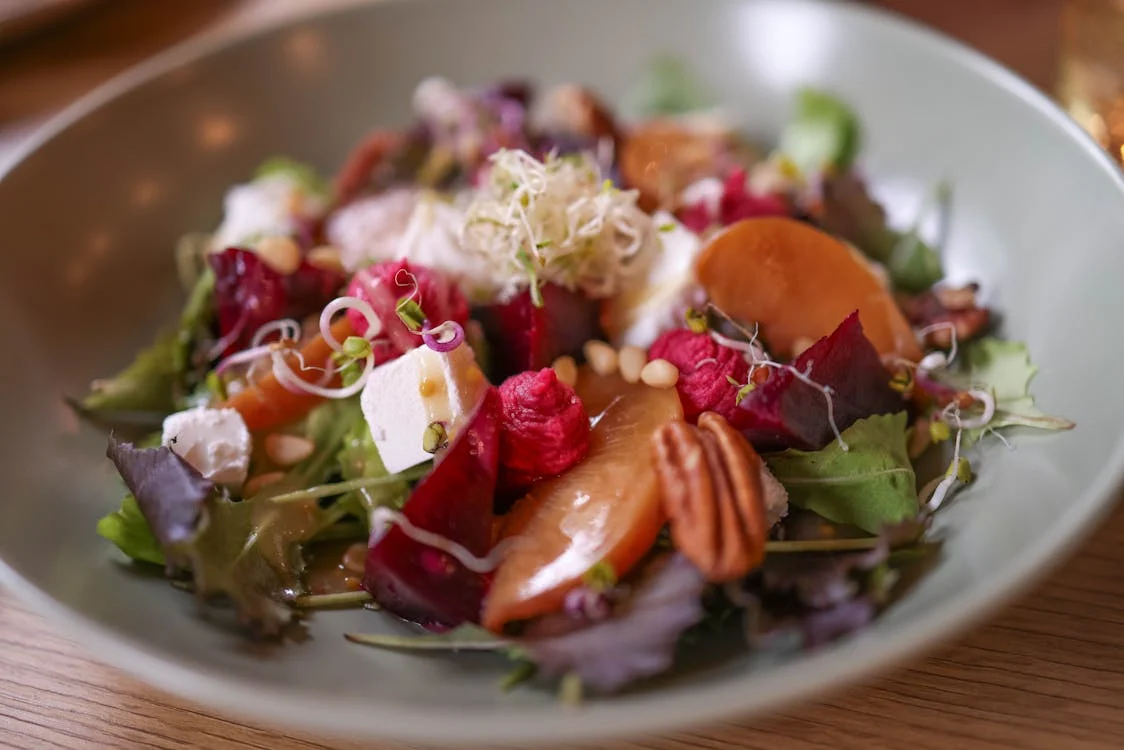Maintaining a healthy weight or striving for weight loss doesn’t mean you have to compromise on flavor or satisfaction. Low-calorie meals offer a great way to enjoy delicious food while staying mindful of calorie intake. In this article, we’ll explore the concept of low-calorie meals, dive into a variety of meal options for breakfast, lunch, and dinner, and provide tips for creating balanced, flavorful dishes that are both nutritious and satisfying.
What Are Low-Calorie Meals?
Low-calorie meals are dishes that contain fewer calories than standard meals but still provide essential nutrients. For most people, a low-calorie meal will fall within a range of 300 to 500 calories per serving, depending on individual dietary needs and activity levels. The goal of these meals is to reduce overall calorie intake while ensuring that you get enough protein, vitamins, minerals, and fiber to support your body’s functions.While calorie counting can be an effective way to manage weight, it’s important to focus on the quality of the calories consumed. Low-calorie meals should be nutrient-dense, providing the body with the vitamins, minerals, and macronutrients it needs to thrive.
Benefits of Low-Calorie Meals
Weight Management:
Consuming fewer calories can help you maintain a healthy weight or contribute to weight loss over time.
Improved Energy Levels:
Eating lighter meals made from whole foods can help stabilize blood sugar levels, leading to improved energy and focus.
Better Digestion:
Low-calorie meals that are rich in fiber support digestion, reducing bloating and promoting gut health.
Prevention of Chronic Diseases:
A diet rich in nutrient-dense, low-calorie foods, such as vegetables, fruits, and lean proteins, may reduce the risk of chronic diseases like heart disease and diabetes.
Low-Calorie Breakfast Ideas
A healthy, low-calorie breakfast jump starts your metabolism and provides you with energy to start the day. Here are a few delicious and satisfying breakfast options that are under 300 calories.
Greek Yogurt with Berries and Chia Seeds
Greek yogurt is an excellent source of protein, while chia seeds add fiber and healthy omega-3 fatty acids. Top with fresh berries for added antioxidants and natural sweetness.
Calories: ~250 per serving
Ingredients: ½ cup Greek yogurt, 1 tbsp chia seeds, ½ cup mixed berries
Avocado Toast on Whole Grain Bread
Avocado toast is a trendy breakfast option that is both filling and nutritious. Use whole grain bread for extra fiber and complex carbohydrates.
Calories: ~280 per serving
Ingredients: 1 slice whole grain bread, ¼ avocado, sprinkle of sea salt and red pepper flakes
Oatmeal with Almond Butter and Banana
Oats are a great source of fiber and slow-digesting carbs, making them an ideal breakfast choice. Adding almond butter provides healthy fats, while the banana gives a natural sweetness.
Calories: ~300 per serving
Ingredients: ½ cup oats, 1 tbsp almond butter, ½ sliced banana
Low-Calorie Lunch Ideas
Lunchtime is a great opportunity to fuel your body with nutrient-dense foods that will keep you satisfied throughout the afternoon. These low-calorie lunch ideas are perfect for a light but fulfilling midday meal.
Grilled Chicken Salad with Mixed Greens
A grilled chicken salad is a staple for those looking to eat light while staying full. Opt for a variety of greens, such as spinach, arugula, and romaine, and add a lean protein like grilled chicken. You can top it off with a light vinaigrette dressing.
Calories: ~300 per serving
Ingredients: 3 oz grilled chicken breast, 2 cups mixed greens, 1 tbsp olive oil vinaigrette, cherry tomatoes, cucumber
Vegetable Stir-Fry with Tofu
Vegetable stir-fries are easy to make and can be customized with your favorite veggies. Tofu adds plant-based protein while keeping the dish low in calories.
Calories: ~350 per serving
Ingredients: ½ cup firm tofu, 1 cup mixed vegetables (broccoli, bell peppers, carrots), 1 tbsp low-sodium soy sauce, garlic, ginger
Turkey and Hummus Wrap
This quick and easy wrap uses lean turkey for protein and hummus for a creamy, nutritious spread. Add in plenty of veggies like spinach, cucumber, and bell peppers to increase the fiber content.
Calories: ~320 per serving
Ingredients: 2 oz turkey breast, 1 tbsp hummus, 1 whole wheat wrap, spinach, sliced cucumber, bell peppers
Low-Calorie Dinner Ideas
For dinner, low-calorie meals should still be hearty and satisfying to help you wind down your day without feeling deprived. These dinner recipes are all under 400 calories per serving but pack a ton of flavor and nutrients.
Baked Salmon with Asparagus
Salmon is a great source of omega-3 fatty acids and protein, while asparagus is low in calories and high in fiber. This simple baked salmon dish is both nutritious and delicious.
Calories: ~350 per serving
Ingredients: 4 oz salmon fillet, 1 cup asparagus, lemon, olive oil, garlic
Spaghetti Squash with Marinara Sauce
Swap out traditional pasta for spaghetti squash to save calories without sacrificing taste. Top with a homemade marinara sauce made from fresh tomatoes, garlic, and herbs for a satisfying and low-calorie meal.
Calories: ~300 per serving
Ingredients: 1 cup spaghetti squash, ½ cup marinara sauce, fresh basil, garlic
Grilled Shrimp Tacos with Cabbage Slaw
These light and refreshing shrimp tacos are perfect for a quick weeknight dinner. Use corn tortillas for a lower-calorie option and top with a fresh cabbage slaw for crunch.
Calories: ~370 per serving
Ingredients: 3 oz grilled shrimp, 2 corn tortillas, ½ cup cabbage slaw, lime, cilantro
Snacks and Sides for Low-Calorie Meals
Snacking can be part of a healthy eating plan as long as the choices are mindful. Here are a few low-calorie snacks that pair well with your meals or stand alone as satisfying treats.
Sliced Veggies with Hummus (~150 calories)
Air-Popped Popcorn (~100 calories per cup)
Apple Slices with Almond Butter (~180 calories per serving)
Greek Yogurt with Honey (~180 calories per serving)
Tips for Creating Low-Calorie Meals
Prioritize Vegetables:
Vegetables are naturally low in calories and high in nutrients. Fill half of your plate with colorful vegetables to increase fiber and satisfaction.
Choose Lean Proteins:
Lean proteins, such as chicken, turkey, fish, and plant-based options like tofu or beans, are essential for muscle maintenance and fullness.
Use Healthy Fats Sparingly:
Fats are calorie-dense, so use them in moderation. Opt for healthy fats like olive oil, avocado, and nuts in controlled portions.
Focus on Whole Foods:
Processed foods are often higher in calories, sugar, and unhealthy fats. Stick to whole, unprocessed foods to keep your meals low in calories and high in nutrition.
Watch Portion Sizes:
Pay attention to portion sizes, especially with calorie-dense foods like nuts, cheese, and oils. Measuring portions can help control calorie intake.
Conclusion
Low-calorie meals don’t have to be bland or unsatisfying. By incorporating nutrient-dense ingredients and focusing on whole foods, you can create meals that are both delicious and beneficial to your health. Whether you’re trying to lose weight or simply maintain a balanced lifestyle, these recipes and tips can help you stay on track without feeling deprived.
FAQs
Can I still enjoy carbs on a low-calorie diet?
Yes, you can enjoy carbs on a low-calorie diet by choosing whole grains like quinoa, brown rice, and whole wheat pasta in moderate portions.
How many calories should I aim for in a low-calorie meal?
The ideal calorie range for a low-calorie meal is around 300-500 calories, depending on your dietary needs and goals.
Can I have desserts on a low-calorie diet?
Absolutely! Opt for lower-calorie dessert options like fresh fruit, Greek yogurt with honey, or a small portion of dark chocolate.
How can I make my low-calorie meals more filling?
Focus on high-fiber and high-protein ingredients, like vegetables, legumes, and lean meats, to increase satiety and prevent hunger between meals.
What are some good low-calorie cooking methods?
Grilling, steaming, baking, and stir-frying with minimal oil are excellent low-calorie cooking methods that retain flavor while reducing excess calories.
By making mindful choices and using the right ingredients, you can enjoy low-calorie meals that satisfy your taste buds and your nutritional needs!
Also read: Vitamin C Serum Japan: 10 Best Brands You Need to Try





